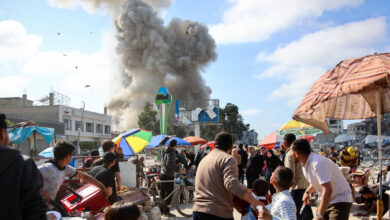How Donald Duck Inspired Me to Go to the Himalayas

Donald Duck was the one who first introduced me to the Himalayas. Just as my travels to Central Asia and all the countries ending in “stan” were probably inspired by Donald’s many prison escapes in Farawaystan, the seeds for my current expedition have been planted. sown by Carl Barks. As a kid, I slept with Donald Duck and I woke up with Donald Duck—in fact, I actually learned to read with Donald Duck. My father just read Donald Duck magazine to me in bed, and when he fell asleep, which he usually did, I would have to continue reading alone.
As I got older, of course I read other things, and I was intrigued by the family atlas. We don’t have globes, but we do have thick atlas. In my imagination, I’ve traveled all over these maps, and nowhere are the names more magical than the brown and white mountain range between India and China: Hindu Kush. Thimpu. Camel. Hunza. Kathmandu. Sikkim. Karakoram. Annapurna. And the most beautiful name of all: Himalayas. I never tire of repeating the sounds to myself: Himalayas.
In one of my favorite stories from Duckburg, Carl Barks let Uncle Scrooge have a mental breakdown. His condition was very serious: he could no longer see or hear about money. Finally, Donald and his nephews take Scrooge to the hidden valley of Tralla La in the Himalayas, where money seems to exist. The valley was so isolated that they could only parachute, but all their efforts paid off: they found an earthly paradise where everyone was merry, happy, and in harmony.
There aren’t many places in the world so shrouded in myth as the Himalayas. The mountains are the final frontier for many adventurers. Even in the early 20th century, Western explorers continued to dress as local merchants and pilgrims in hopes of reaching Lhasa, the legendary capital of Tibet, and for several decades later. when the flags have been planted in both the South and the North Pole, the highest peaks of the Himalayas have yet to be conquered. Then there are all the stories and mysticism. Books about hidden valleys, where no one ages and no one dies, where everyone lives in enlightened harmony, possessing great insight and wisdom, have flown off the shelves of stores. books in Paris, London and New York.
Uncle Scrooge did not stay long in Tralla La. He had brought along some bottles of medicine in case the disease came back, and the locals were obsessed with bottle caps, which they considered rare treasures, so they began to trade with each other. surname. To solve this problem, Uncle Scrooge flew a plane to drop a billion bottle caps into the valley. The fields were covered with bottle tops, and this proved too good to be true. The people were extremely angry and the ducks had no choice but to flee the valley.
When I started traveling at the age of 19, my first choice was clear: I had to see the Himalayas. My encounters with the chaotic streets of Kathmandu, where tourist shops jostle for space, and the Tibetan villages of Annapurna, where pizza and spaghetti are on the menu, disgusted me yet again. want more. Years later, I went to Bhutan, and discovered a very different reality in the Himalayas, but this too has been modified and buffered to suit the modern Western explorer.
I have felt and read that the Himalayas are much more than a dream paradise for spiritual tourists or mountaineers. Cultural and linguistic diversity is immense, as ethnic groups large and small have sought refuge for centuries in remote, hard-to-reach valleys, where many of them remain more or less undisturbed to this day. Climbers write about the mountains they climb and their own efforts; explorers often write more about themselves than about the societies they “discover”. The Himalayas are not only high but also long; The range passes through five countries, from China and India in the north, through Bhutan and Nepal, to Pakistan in the northwest. I wanted to discover what life stories and cultures would be found there, in addition to the trails, high in the valleys, and beautifully named mountain villages.
I will soon go both far and high.
I took a taxi from the center in Kashgar and followed the pungent smell of cattle past melon sellers and butchers, until I reached the herds. At the entrance to this market, I was stopped by three policemen, all of whom pointed sternly at my camera.
“No photos!” they shouted in unison.
“Why?” I asked, but got no answer other than being told again, “No pictures!” It has no meaning. The cattle market in Kashgar is renowned as one of the best and most interesting in the world. People travel from afar with suitcases full of expensive camera equipment to experience for themselves.
The market area itself reeked of fur, excrement, and fear. This place is full of sheep, good cows, and a strange wayward donkey. The animals stood side by side, tied to a makeshift fence or pressed together on the back of a truck. People shouted and exchanged everywhere, handfuls of banknotes were counted and exchanged. The men had calloused hands and wore dirty work clothes. The women wore ao dai covered with shit. Here and there I see Chinese tourists wearing masks. None of them noticed unauthorized photography, and the farmers didn’t seem to mind being photographed – they were too busy for that. Police tend to stay in their guardhouses near the entrance, at a safe distance from cowsheds, sheep manure yards — and tourists.
Kashgar and commerce are more or less synonymous. The city’s strategic location at the foot of the Pamir Mountains meant that whoever controlled Kashgar would also control trade routes west to Persia and south to Kashmir. There are caravan routes from Kashgar to Xi’an in the northeast and Kazakhstan in the north. Marco Polo, who passed through the city during his expedition to China in the thirteenth century, described Kashgar as the “best and greatest” city in the region.
Kashgar’s history is long and turbulent. For centuries, the city was ruled by the Greco-Bactrian Kushan dynasty, Tibetan kings, Chinese emperors, Arab caliphates, Mongol khanates, and Turkish dynasties. The Chinese did not rule until the 18th century: Xinjiang Province, and therefore also the city of Kashgar, was not permanently incorporated into the Chinese empire until 1757. Xinjiang means “new frontier”. “.
Xinjiang is China’s westernmost province and the largest by far: larger than Spain, France, Germany and the United Kingdom combined. The province shares borders with eight countries—Russia, Mongolia, Kazakhstan, Kyrgyzstan, Tajikistan, Afghanistan, Pakistan, and India—and is crucial to the development of the New Silk Road, or Ring Initiative. Belt and Road (BRI), as China. The government’s new pet project is officially called. The plan aims to connect China with other countries in Asia, as well as with Europe and Africa, through a massive new network of roads, railways, and transportation routes—the Silk Road. modern, with China as the world’s main supplier of labor, large loans, cheap electronics and mass-produced clothing. China has deciphered it: in the hypercapitalist era, when everything was salable and free competition was god, empire building took a different form. Why account when you can buy? Why subdue a country by force when you can be the cheapest supplier to their market?
Although Xinjiang is about half the size of India, it has the same population as Beijing – about 20 million people. The topography of central Asia is not favorable, and large areas, such as the Tian Shan Mountains and the Taklamakan Desert, are uninhabitable. Over the past few decades, the number of Han Chinese in Xinjiang has increased significantly, but is still less than half of the Uighur population. More than 90 percent of the population in the rest of China is Han; Xinjiang and Tibet are the only provinces where they do not yet have a majority.
The Uighurs are a Turkic people native to Mongolia and the area south of Lake Baikal in Russia. When they were driven out of Mongolia by Yensei Kyrgyz in the ninth century, they settled in the area that today includes Xinjiang. Here they founded the kingdom of Qocho or Uighuristan. In the 13th century, the Uighurs surrendered to the cruel army of Genghis Khan and for centuries were ruled by many Mongol khanates. The Uighurs were originally Buddhist and Manichaeists, but converted to Islam under the Mongols.
The Chinese had to work hard to maintain their rule over the new territory. In the late 1860s, Yaqub Beg, a brutal warlord from present-day Uzbekistan, took control of much of Xinjiang. Beg tyrannized the area for nearly a decade before the Chinese finally managed to expel him. Meanwhile, the Russians took the opportunity to take the Ili Valley to the north, but gave it back to the Chinese 10 years later with a large sum of money. When the Qing dynasty fell in 1912, and China’s first republic was proclaimed, Xinjiang was more or less left alone. Once again, Russia took its chance, and by the 1930s, Xinjiang was entirely a Soviet colony, minus the name. The Russians control everything from oil wells to tin mines, Russian is the most common foreign language, and in good communist style many mosques have been converted into community centers and theaters. The former Soviet consulate in central Kashgar still stands as a monument to this Russian influence. It’s a budget hotel now, but the splendid gardens, complete with Greek-inspired statues, pavilions and fountains, are testament to the grandeur of the past.
At the same time that the Soviet Union dominated the region, the locals were awakening. Turkish-speaking Muslims once again began to call themselves Uighurs, heirs to the Uighur kingdom, a name that had been dormant for centuries. There were those who dreamed of establishing Turkestan, an independent republic for the Turkic peoples of Central Asia, and in the early 1930s East Turkestan emerged. With the support of the Chinese Kuomintang, the Kuomintang, a Muslim army attacked Kashgar in 1934. Several thousand Uighurs were killed in the ensuing battles, and the republic of East Turkestan also died with them. It revived again briefly 10 years later, in the Ili Valley, north of Xinjiang, with considerable support from the Soviet Union. The Second East Turkestan Republic, with its own currency and military system, permanently renounced its independence when Mao came to power in 1949.
More recently, there has once again been a ruckus in China’s Wild West, leading to numerous terrorist attacks. For example, in March 2014, a Uighur terrorist group randomly attacked passengers with knives at a train station in Kunming in Yunnan province, more than 2,000 kilometers from Xinjiang. Thirteen people were killed and more than 140 were injured. A few weeks later, 43 people were killed in a car bomb attack at a vegetable market in Urumqi, the largest city in Xinjiang. The following September, more than 50 people were killed in a knife attack at a coal mine in Aksu, western Xinjiang, and the Uighurs were once again responsible for the attack.
The Chinese government has now taken draconian measures to suppress the Uighur separatist movement. Since 2017, more than 1 million Uighurs have been detained in state concentration camps. The Chinese government likes to call them “re-education camps,” but in reality, they resemble modern-day concentration camps, with watchtowers surrounded by high walls and barbed wire. Former prisoners have recounted how they were forced to sing songs praising the Communist Party, and how difficult prisoners were beaten, raped, not fed, and held in solitary confinement. In many cases, the Han moved in with the prisoners’ families to supervise the relatives and teach them about Chinese values.




